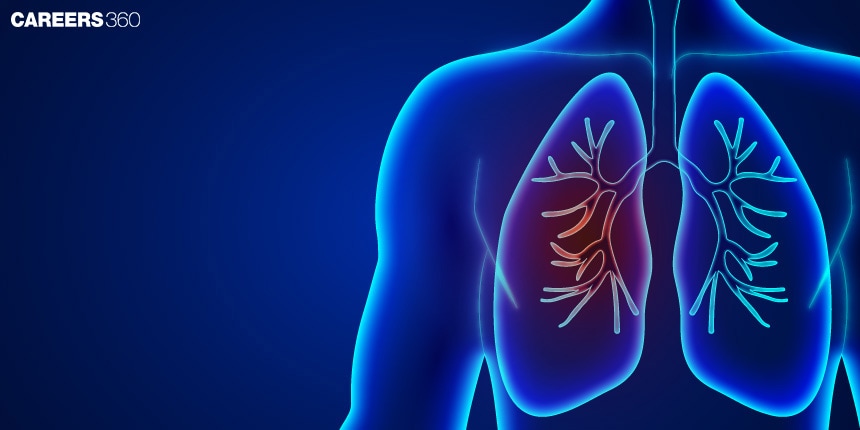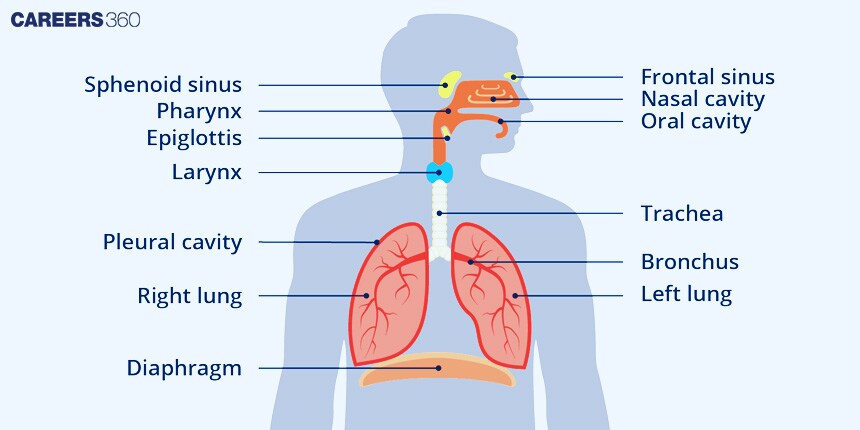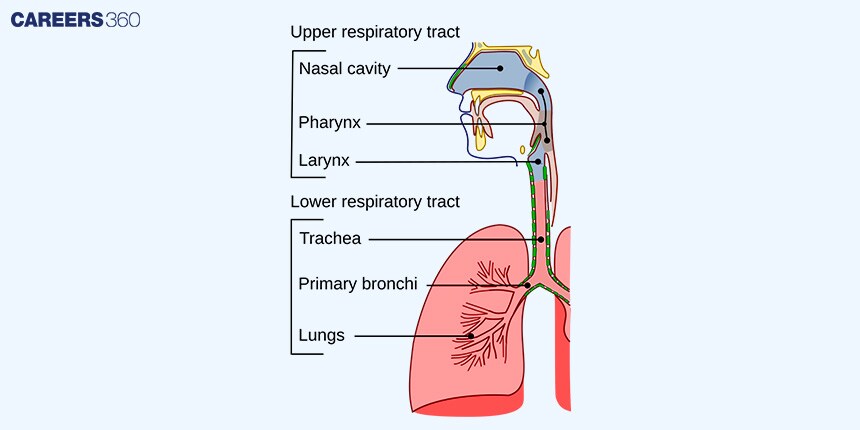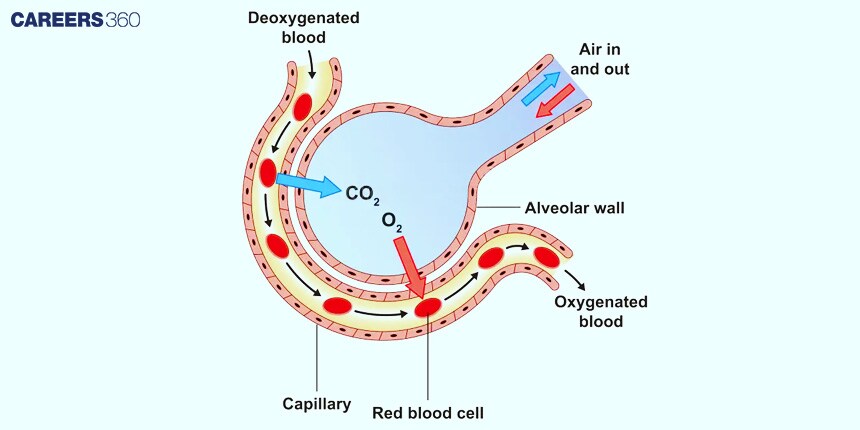Respiratory System: Definition, Organs and Functions
What Is Respiratory System?
The respiratory system in the human body is highly significant in its ability to enable us to breathe, and through that, the biological exchange of atmospheric oxygen and carbon dioxide between an organism and its surroundings. This system is involved in taking in oxygen through the human body into the circulatory system's blood and getting rid of the metabolic product carbon dioxide.
NEET 2025: Mock Test Series | Syllabus | High Scoring Topics | PYQs
NEET Important PYQ's Subject wise: Physics | Chemistry | Biology
New: Meet Careers360 B.Tech/NEET Experts in your City | Book your Seat now
- What Is Respiratory System?
- Structure Of The Respiratory System
- Respiratory Tract
- Mechanism Of Breathing
- Diaphragm And The Intercostal Muscles
- Gas Exchange
- Functions Of Respiratory System
- Diseases Of The Respiratory System
- Recommended video for Respiratory System

Structure Of The Respiratory System
The respiratory system is represented by a few important elements that participate in the respiration process.
Nasal cavity
Pharynx
Larynx
Trachea
Bronchi
Bronchioles
Lungs
Alveoli
Diaphragm

Respiratory Tract
Further elaboration can be done in the form of the upper and lower respiratory tracts that have individual structures in them.

Upper Respiratory Tract
Nasal cavity: Filters, warms, and humidifies air.
Pharynx: Air and food passageway.
Larynx: Where the vocal cords are located and also provide protection.
Lower Respiratory Tract
Trachea: The tube for air to pass in the direction of the bronchi.
Bronchi and Bronchioles: Airways carrying the air for the lungs.
Lungs: Major organ of breathing.
Mechanism Of Breathing
Breathing takes place via two main processes, inhalation and exhalation.
Inhalation
When the diaphragm contracts, it becomes flat, and it moves down into the chest cavity space below, creating more space in the chest cavity and air rushes into the lung.
Exhalation
The diaphragm relaxes and moves upward, reducing the chest cavity size and forcing air out of the lungs.
Diaphragm And The Intercostal Muscles
It is the major muscle of respiration.
The intercostal muscles expand and contract the rib cage.
Gas Exchange
Alveoli in the company of capillaries are the sites of gas exchange in the lungs.
Alveoli And Capillaries
Alveoli: Tiny caverns within the lungs where gases are exchanged in a body.
Capillaries: Minute blood vessels that exchange oxygen and carbon dioxide.
Mechanism Of Gaseous Exchange
Inhalation of oxygen through the lungs. The oxygen is then diffused from the alveoli into the blood.
On exhalation, the carbon dioxide extinguishes the blood to be exhaled.
Functions Of Respiratory System
There are several extremely critical functions of the respiratory system in the human body, which are namely:
Oxygen Delivery
Supplies oxygen inhaled by the body for cellular respiration.
Carbon Dioxide Excretion
Removes carbon dioxide, which is the gas waste product of metabolism.
Acid-Control of pH
It maintains the balance among the acid-base constituents in the blood, thus regulating the pH.
Voice Production
The larynx is the organ of voice production.
Diseases Of The Respiratory System
Several respiratory system diseases are common.
Asthma: Inflammation in the airways leads to a tight chest.
COPD (Chronic Obstructive Pulmonary Disease): A grouping of progressive lung diseases that gets in the way of airflow.
Pneumonia: It is an infection that can bring inflammation to the air sacs of a lung.
Tuberculosis: An infectious and severe disease in the lungs.
Lung Cancer: A disease of the lungs characterised by uncontrolled growth of malignant tumours.
Conclusion
The respiratory system is a gargantuan necessity for life. It infuses body cells with oxygen and rids them with carbon dioxide. The knowledge of its parts, functions, and maintaining good health is, therefore, very important for everybody. With further ongoing studies, advanced knowledge and cures are discovered for various lung diseases and ailments.
Recommended video for Respiratory System
Frequently Asked Questions (FAQs)
The key point for the respiratory system is to facilitate the exchange of oxygen and carbon dioxide between the body and the environment.
Gas exchange occurs in the alveoli. Oxygen from inhaled air passes from the alveoli sacs into tiny surrounding blood vessels and into the bloodstream. Finally, it enters the other parts of the body. Major parts include the nasal cavity, pharynx, larynx, trachea, bronchi, bronchioles, lungs, alveoli, and diaphragm.
Smoking causes damage to the respiratory organs and leads to chronic bronchitis, emphysema, and lung cancer.
Classic symptoms include shortness of breath, chronic cough, wheezing, chest pain, and laboured breathing.
Also Read
29 Nov'24 11:00 PM
27 Nov'24 01:11 PM
26 Nov'24 11:17 AM
26 Nov'24 10:17 AM
25 Nov'24 07:51 PM
25 Nov'24 07:19 PM
25 Nov'24 11:48 AM
18 Sep'24 06:39 PM
18 Sep'24 06:35 PM
18 Sep'24 04:11 PM
